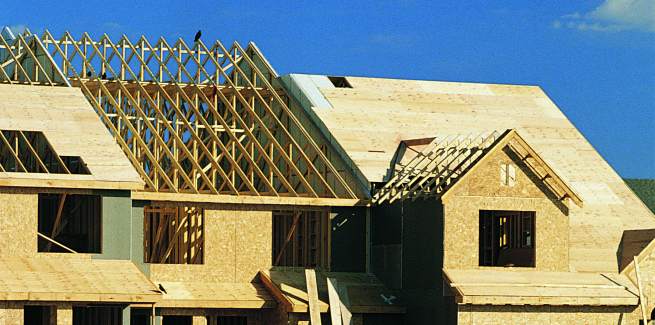A new report published by ANZ Research has noted that, over the month of November, residential building approvals in Australia increased by 3.6 per cent to 16,448, following on from a 14-month low for growth in October, when approvals declined by 12.9 per cent.
The paper, which has presented internal research alongside data from the Australian Bureau of Statistics (ABS), Macrobond and Bloomberg, has noted the number of unit and house building approvals increased month-to-month.
Unit approvals grew by 9.7 per cent from 4,846 to 5,315 – in contrast to October’s fall of 8.8 per cent, while houses were up by 1.4 per cent at 10,892, tapering from the previous month’s increase of 4.3 per cent.
The rise in units was the driving force behind the rebound in overall residential construction approvals during November.
But, building approvals were still 10.5 per cent lower than September (18,385) and 30.1 per cent lower than the peak in March (23,539).
ANZ senior economist Adelaide Timbrell has warned this uptick in construction may not continue, stating that while working from home may support approvals in the short-term, and that omicron could induce higher savings rates, there are bigger risks to building approvals – specifically higher interest rates.
“We’ve already seen that fixed interest rates have come up from their lows, and we still expect the Reserve Bank to potentially end its quantitative easing programme as early as February, which means that fixed interest rates are likely to keep rising,” Ms Timbrell told Mortgage Business.
“As the average cost of borrowing rises, the cost of servicing a new build rises, but the average amount of money that a person can borrow for a new home also declines.
“That means that someone who might have been able to borrow a certain amount last year may only be able to borrow a smaller amount this year, that’s something that can reduce the number of people who are going ahead with approval for new builds.”
Ms Timbrell added that another factor is how the federal government’s grant HomeBuilder is now no longer being an option, meaning there are also fewer people who are going to be building new homes.
“We also know that because HomeBuilder brought forward a lot of housing projects; there are a lot of people who maybe usually would have started to build a home this year or next year that did it last year instead when they could have got HomeBuilder. So all of those factors together do create a risk of building approvals falling further in the longer term,” Ms Timbrell said.
“And eventually, once the cash rate actually starts to go up, that will hit people’s borrowing capacity even more, and that can reduce the ability of people to build new homes as well.”
Across states, significant growth in unit approvals was recorded across South Australia (surging by 65.7 per cent), Queensland (up by 47.4 per cent) and Victoria (up 28.8 per cent).
But not every state experienced similar results, with NSW reporting unit approvals plummeted by 48.7 per cent for the month, reportedly its lowest sum since February 2012.
In contrast, the most-populous state saw an uptick in housing approvals, up by 5.4 per cent, while Queensland (up 7.4 per cent) and South Australia (increasing by 6.4 per cent) reported similar results.
Economists with investment group Natixis recently noted that in the current low rate environment, accelerating housing approvals will increase supply, but they aren’t likely to be matched by demand as mortgage debt has escalated.
The research note stated “housing debt has risen to a historically high level of 140 per cent of income”.
“Foreign demand has been on a downward trend, since the Foreign Investment Review Board restricted investments from overseas in 2015,” the research note from Natixis analysts added.
“All in all, the vacancy rate should soon start to rise.”
As such, the Natixis analysis speculated that this could in turn lead to a market correction.
“Eventually, with wage growth remaining structurally weak, a higher interest rate could destabilise the housing market,” the note asserted.
[Related: Super for housing would escalate property prices: Report]
 ;
;